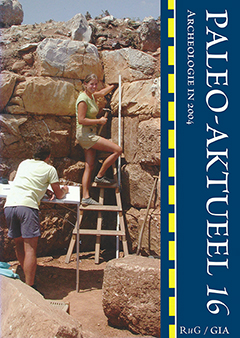Onderzoek aan plantenresten uit Grieks-Romeins Karanis (Fayum, Egypte): een doorstart na 70 jaar
Samenvatting
Despite the scale of the excavations at Karanis (Kôm Aushim) in 1925–35 by the University of Michigan, during which hundreds of buildings were uncovered, no serious archaeobotanical research was done. Plant remains that were secured are stored at the Kelsey museum in Michigan, and at the Graeco-Roman, Coptic and Islamic Museum and the Ancient Egyptian Agriculture Museum, both in Dokki (Cairo). Publications mentioning plant remains from Karanis are few, em-ploy an obsolete taxonomy and include misidentifica-tions, as can be judged by photographs. This article presents an updated archaeobotanical record of Karanis. This record is based on an inventory of plant remains kept at both museums in Dokki (Cairo), made in November 2004 and March 2005, and on the analysis of a rubbish dump in the centre of Karanis, which was sampled in November 2004. It is hypothesized that the fungal disease ‘covered smut’ (Ustilago hordei [Pers.] Lagerh.), one of the three smuts which occur in barley, may have been introduced into ancient Egypt by the Greeks and Romans. The spores of this fungus are not wind-dispersed but are spread by sowing seeds. So far, infected rachis fragments have been documented in Egypt from three Graeco-Roman sites: Berenike, Shenshef and Karanis.

